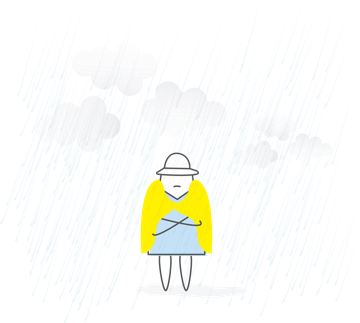The era of consumer disloyalty and personalization of business
The new crisis will not only test the financial stability of the company, but will also change many consumer behavior patterns. From what will be in question - brand affection. Tabasco creative director Alexander Smirnov at the Get business festival, which was held in Kiev, spoke about the end of the era of love brands and a new trend in product promotion.
“The leading theory in marketing over the past 10 years has been the theory of lovemark (Lovemark, favorite brand). Most consumers periodically choose the products of their "favorite" brand, without even considering other options. These are the most loyal customers. In the 2000s, the top 15 world “brands” were led by Coca-Cola, Apple and Microsoft. In 2010, it was Microsoft, IBM, Coca-Cola. Today, the first three of the world are Apple, Google and Amazon, ”recalls Alexander Smirnov. In the context of our country, we can also distinguish producers of beer and drinks, confectionery, food, clothing - but we will not do this to avoid advertising. And even in the regions, the population also has their own “shops”: craft sausage shop, a brand of farm products, and baking a specific pastry shop. But the era of lovemarks - a period in which much has been forgiven to the beloved brand because it is so wonderful - is becoming a thing of the past. Customer affection will no longer protect the brand.
Why did the era of disloyalty begin? This is not only a financial blow to consumers caused by the epidemic and crisis, but also the psychological consequences of digital intoxication, which hit society even before the new virus. According to Alexander Smirnov, today a person receives about 10,000 advertising messages per day. People surrounded themselves with the Internet and Smart devices, and it is already difficult for them to live with so much information. Amazing statistics: even being in an offline store, 82 people out of 100 are still “located” in smartphones at that time. In the atmosphere of this information oversaturation, the consumer gets tired of long connections: he often changes phones, cars, and even gets divorced more often, ”says the speaker.
According to research:
8% of consumers are devoted to their favorite brand
33% are ready to try new things and are actively looking for it
56% choose from a list of well-known brands, but are ready to experiment
86% of people are open to changing brands in the market.
The saturation of information and the choice of its sources leads to the so-called "clip thinking". This is caused by thoughtless clicks on links on the network, flickering news stories and advertisements, steep texts in the media. The brain gets used to being perceived in fits and starts, and a person does not even begin to perceive the real world as a whole, but as a sequence of almost unrelated events and disparate facts. He is not able to concentrate on information for a long time, his ability to analyze, to empathize is reduced.
During the period of informational satiety, and even against the background of increased anxiety (the period of crisis, quarantine with a mass of empty time), people need a need for order. Not finding a fulcrum in real life, a man began to look for it in a fictional reality. During a period of prolonged disruption of social ties and constant, intrusive monitoring of the situation online or on television, we have quietly “hooked” on the serial format of perception of information. Remember, the era of seizure by TV shows almost always accompanied periods of social and financial turmoil. Starting from “The Rich Also Cry” and “Slave Izaura” in 1991 ...
“Please note how the series gradually returned to replace clips and blockbusters, their next era has come. We are completely immersed in the world of the series, because we are interested in following the characters in the long-term development of the plot. If we take a closer look, we will find a huge number of examples in the list of watched TV shows when our decision-making model is based on how the characters of the series behaved. According to statistics, now the highest level of watching TV shows and TV shows is among the millennials. This is what caused the success of Netflix, Amazon - the future is there, ”says Alexander Smirnov.
How is the era of series connected with branding of the company? The expert assures: directly. Firstly, advertising and communications always go after mass culture, they draw inspiration and ideas there. That is, most of the companies whose activities allow us to build a brand should adopt a new strategy for its development. "Created a brand," sold "it to consumers, then you work for the flow" - this approach is outdated. Events from the life of the company should not end, they need to be continued in the following "series" - new posts in the FB or Instagram, in publications on the network, in the development of the product itself.
Alexander Smirnov proposed the following recommendations for this. First, it is necessary to personalize the business, to show customers and consumers the personal success story of the founder of the company, the entrepreneur. In other words, create the hero of the series, the main character. Around there are a huge number of successful businesses where this approach worked. Tesla is not just a car, it is the story of a beautiful, talented entrepreneur Ilon Mask. Therefore, choosing Tesla, someone votes for the personal success story of Elon Musk. Another classic example is the Ferrero family, which for centuries has not been interviewed and for the first time in 2018 agreed to divulge the identity of the owner. There are many examples in the Ukrainian business environment. For example - Dmitry Dubilet with a cat in a backpack and his "Monobank". This is the signal that it is time for companies to personify.
The second thing you need to borrow from the series when working on a brand is to be systemic, to determine your social position. A brand cannot simply sell a product; it must state what values it protects. A completely fresh example is the Burger King, which recently shook the world. They wanted to show that they had no preservatives, and for this they showed not a beautiful picture, but how their product molds. The company's product is considered junk food ("empty calories", food with low biological value and high in fat and sugar). But they showed how junk food can be natural. And it worked.
And the third is the ability to create a plot (news). Without this, a brand cannot exist even in a small business. It must generate new content. The combination of the owner’s personality, social mission, company news (new products, projects, new customers) forms a successful information field. It doesn’t matter at what level the company operates - regionally, nationally or locally. In the post-crisis world, brands are stories about people, products, and ideas that you want to meet in the next series.















